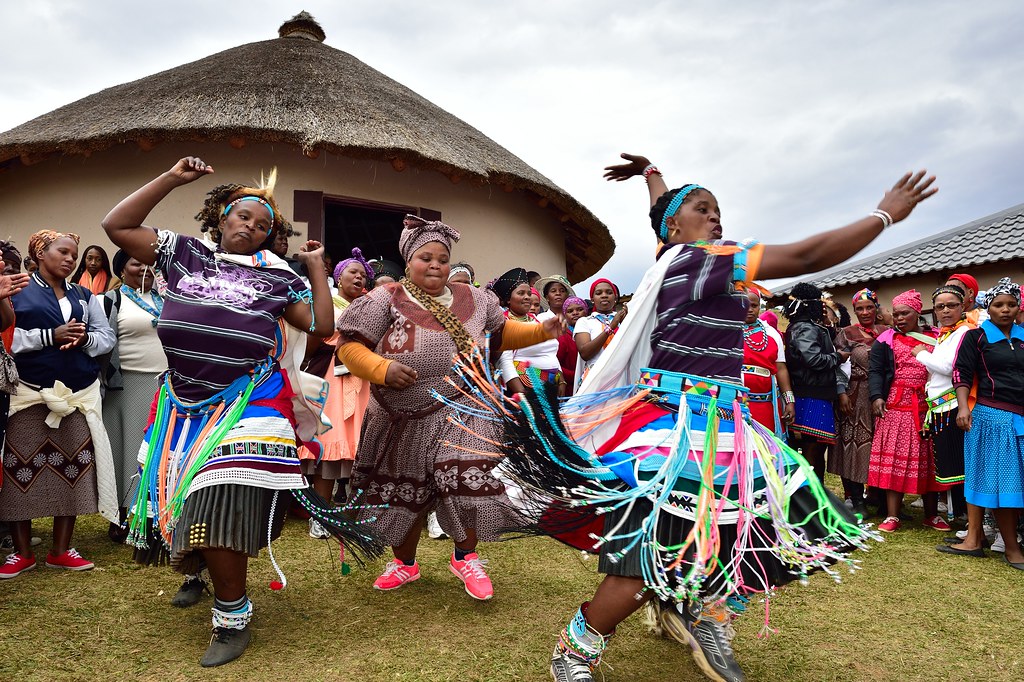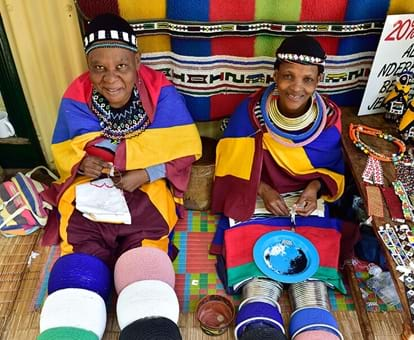Examine This Report on South African Culture Today
Examine This Report on South African Culture Today
Blog Article
The Greatest Guide To South African Culture Today
Table of ContentsAll About South African Culture TodayWhat Does South African Culture Today Mean?Facts About South African Culture Today RevealedFacts About South African Culture Today RevealedThe Buzz on South African Culture TodaySouth African Culture Today for Beginners
This follows with singing and drum beating. The bride and groom after that meet the senior citizens and chat concerning the relevance of their union. An issue of relevance in Zambian towns is the passing away of loved ones. All participants of the town put money, time and effort with each other for the funeral of the deceased.Music and dancing is an extremely essential element of the Zambian culture. The various tribal units have their very own dancing forms; nonetheless, makishi is typical amongst all people.
The Basic Principles Of South African Culture Today
When it pertains to songs, drums are made use of the most, with a variety of drumming ceremonies. In Zambia, majority of the people are Christian; Protestant and Roman Catholic. There are little teams of Muslims and Hindus, with the rest adhering to neighborhood indigenous tribal ideas.

South African heritage and society is immensely varied, and includes numerous various groups of people who each have their very own customs and beliefs. Having such a variety of people and societies is what makes South Africa so special. In truth feeling of the expression, we are a rainbow nation.
South Africa has roughly three hundred thousand Portuguese people residing in it. Making it the 7th on the list of nations with the most Portuguese people in it outside of Portugal. Portuguese is not just a culture, however it is also a language and a race. Portuguese people stem from the country of Portugal in Europe, nonetheless, because of Portugal (like several other nations in Europe) checking out the globe and dominating various other countries throughout the 15th 20th centuries, South Africa has what we call Portuguese South African's living in it.
More About South African Culture Today
Amongst the popular functions of the topography is a plateau that covers nearly 2 thirds of the facility of the nation. The plateau facility climbs towards the southeast, where it culminates in the Drakensberg array, component of a cliff that divides the plateau from the coastal areas. The Drakensburg consists of Champagne Castle, the greatest height in the nation.
The area north of the Witwatersrand, called the bushveld, inclines downward from eastern to west towards the Limpopo River, which creates the global boundary. The western area of the plateau, the middleveld, additionally comes down in the direction of the west and differs in altitude between the highveld and bushveld. Between the Drakensburg and the eastern and southern coastline, the land descends to the sea.
Nearer the shore there is a low-lying level called the eastern lowveld. Southwest of the plateau the nation ends up being gradually a lot more arid, providing way to the stony desert of the Great Karroo, verged on the eastern by the reduced, better watered plateau of the Little Karroo. Separating the completely dry southerly interior from the sandy littoral of the southerly shore and West Cape is one more variety, the Langeberg.
Getting The South African Culture Today To Work
The nation's racially, ethnically, and politically divided background has generated national and subnational icons that still work as icons of the country, and others icons that are accepted only by specific groups. The monoliths to white settler occupation and political supremacy, such as the Afrikaner Voortrekker ("pioneer") Monument browse this site in Pretoria and the Rhodes Monolith honoring the British colonial realm home builder and Cape head of state Cecil Rhodes, continue to be sectarian signs.
The initial modern citizens were the San ("bushman") hunter-gatherers and the Khoi ("Hottentot") peoples, that rounded up livestock (South African culture today). The San might have been present for countless years and left proof of their presence in countless old cave paints ("rock art"). Bantu-speaking clans that were the forefathers of the Nguni (today's amaZulu, amaXhosa, amaSwazi, and vaTsonga individuals) and Tswana-Sotho language groups (today's Batswana and Southern and Northern Basotho) migrated below eastern Africa as early as the fifteenth century

Both former republics of the Orange Free State and Transvaal (South African Republic) were established by Afrikaner settlers that beat and dispossessed the Basotho and description Batswana. Lesotho would certainly have been by force included right into the Orange Free State without the expansion of British security in 1869. The utmost unification of the country resulted from the South African War (18991902) between the British and the 2 Afrikaner republics, which reduced the nation to ruin at the start of the twentieth century.
Afrikaners traditionally considered themselves the just true South Africans and, while giving full citizenship to all residents of European descent, denied that standing to individuals of shade up until the democratic transition of 1994. British South Africans preserve a feeling of cultural and social connection to Great Britain without weakening their identification as South Africans.
Our South African Culture Today Ideas
The variety and fragmentation within ethnic collections and the balance of tensions in between those teams throughout the twentieth century prevented interethnic civil problem. While intergroup tensions over resources, privileges, and political prominence continue to be, those conflicts are as most likely to match Zulu against Zulu as Zulu against Xhosa or African versus Afrikaner.
From colonial India, British go to my site vendors and managers brought the bent metal ornamental roof coverings and slender shoelace job pillars that still represent the outdoor patios of cottages in the areas and cities throughout the country. Homes of prayer contribute a crucial architectural element also in the smallest towns. In enhancement to the soaring steeples and traditional stonework of Afrikaans Dutch Reformed churches, Anglican churches, synagogues, mosques, and Hindu temples offer selection to the spiritual architectural scene.

Slaughtering and the brewing of conventional cereal beer are necessary in safeguarding the involvement and goodwill of the forefathers that are taken into consideration the guardians of excellent lot of money, success, and health. Indian neighborhoods preserve their native culinary traditions and use them on Islamic and Hindu ritual and ceremonial occasions. Afrikaners and Coloured people collect at weekends and unique events at multifamily barbecues called braais, where community bonds are strengthened.
Because this was the key financial business of both black Africans and white colonists, conflict in between those teams centered on the belongings of grazing land and livestock. In 1867, the biggest ruby deposits on the planet were uncovered at Kimberley in the west main location. The riches from those fields aided finance the exploitation of the greatest gold coral reef on the planet, which was discovered on the Witwatersrand in 1886.
The South African Culture Today Diaries
This led to misconceptions and purposeful misstatement in the transactions of white inhabitants and government authorities with African principals during the early american duration (South African culture today). In the establishment of African gets, some aspects of common and primarily "tribal count on" land period were preserved, and even in white country locations, forms of common period were still practiced in areas with African areas
After the democratic improvement of 1994, programs for land restitution, redistribution, and reform were set up, but development has actually been slow. The white minority still controls eighty percent of the land. Following agricultural land invasions in Zimbabwe, the Department of Land Matters has actually promised to speed up land redistribution.
Report this page